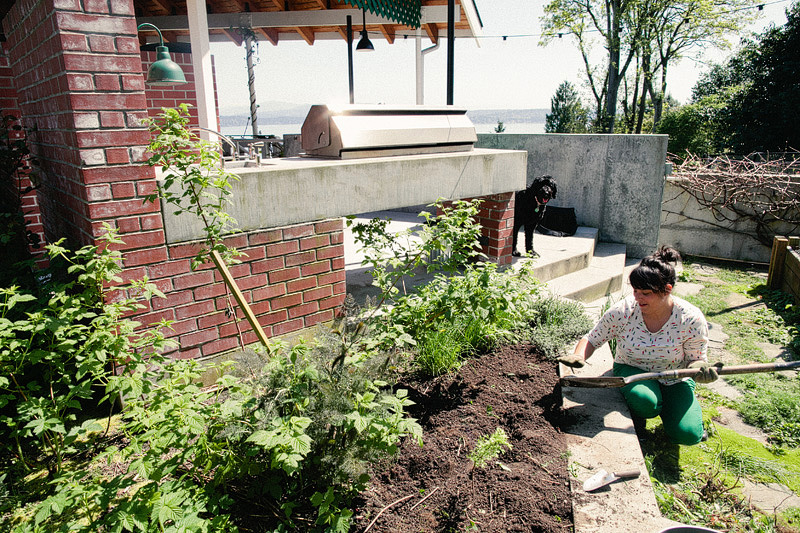Compost 101 - When & Why to Add Compost to Your Garden
Compost can be confusing. We all know it's "good", but good how? And when should we use it? Do we even need to use it? Here is a short good-to-know guide for when and why to add compost to your garden. Compost is an efficient and practical fertilizer. Composed of decayed organic matter, compost is a basic tool for the organic gardener. Brown leaves, compostable materials like cardboard and newspaper, grass clippings, food scraps, twigs and more can all be broken down into compost. Compost is created through the process of thermal decay and then added as humus to the garden. Compost is home to millions of active microorganisms which help to continue breaking down organic matter into bio-available nutrients - food for plants!
Quite simply, compost adds nitrogen to a garden. Nitrogen is what contributes to a plants healthy, green growth. This is an excellent excerpt from an article on the role of nitrogen in the garden.
WHAT CONDITION IS THE COMPOST IN?
No two compost heaps, piles or bags are created equal, so the first question to ask about compost is - what condition is it in? Newer compost needs more time to break down, which keeps all those beneficial microorganisms busy decomposing. Essentially, this 'ties up' nitrogen as it's being used by microorganisms to digest high carbon material, as opposed to being readily available for plants.
With older compost - that which has been more thoroughly broken down - the material has more nutrients readily available to plants.
Either way, it's good to note that, once applied, all compost will continue the natural process of breaking down and decaying into rich, nutrient-dense soil. And remember, as microorganisms break down compost, nutrients are released and made into fertilizer available for plants.
WHEN TO ADD COMPOST TO A GARDEN
With homemade, fully decomposed compost, the nutrients are more readily available to plants and can be added onto just-planted garden beds or soon-to-be-planted garden beds. For many urban growers, bagged compost is what is easy and available. If you're using bagged compost, add in layers about 1 to 2 inches thick in early spring. Now (early March) is a great time. Dig in lightly with a bow rake, and leave the compost to rest a week or two before you plant seeds or starts.
When using homemade compost or if compost is thick with green matter and fibrous, add to garden beds in autumn. (You should also allow chicken manure some time to cure and age before seeding or planting directly.) The compost will be mostly decomposed by spring and beds should ready for planting. With backyard compost, get into the practice of adding 2-3 inches of new/fresh compost in the autumn (in lieu of cover crop) so that the compost can decompose over winter and into early spring.
CREATING BEDS FOR THE FIRST TIME
If this is the first time you'll plant in a portion of your yard, take extra time and effort to double dig in compost. Double digging contributes to a lighter, loamy soil and once you do it, you'll never have to do it again. It can be back breaking work if you're in a large space, but for most urban gardens you can get it done. Here is a more in-depth look at double digging from Rodale's.
ADDING COMPOST TO EXISTING GARDENS
With crops that have over-wintered, or when applying compost well into the garden season, practice a technique called "side dressing". Apply a layer of compost a few inches away from the plants, protecting delicate plant stems from active microorganisms. In this way, the compost is applied as a mulch and so it reaps multiple rewards; It offers nutrients to plants mid-cycle, will discourage weed growth, and it will retain water - a benefit of side dressing in summer. Multi-purpose compost!
Save
Save
Save
Save
Save

